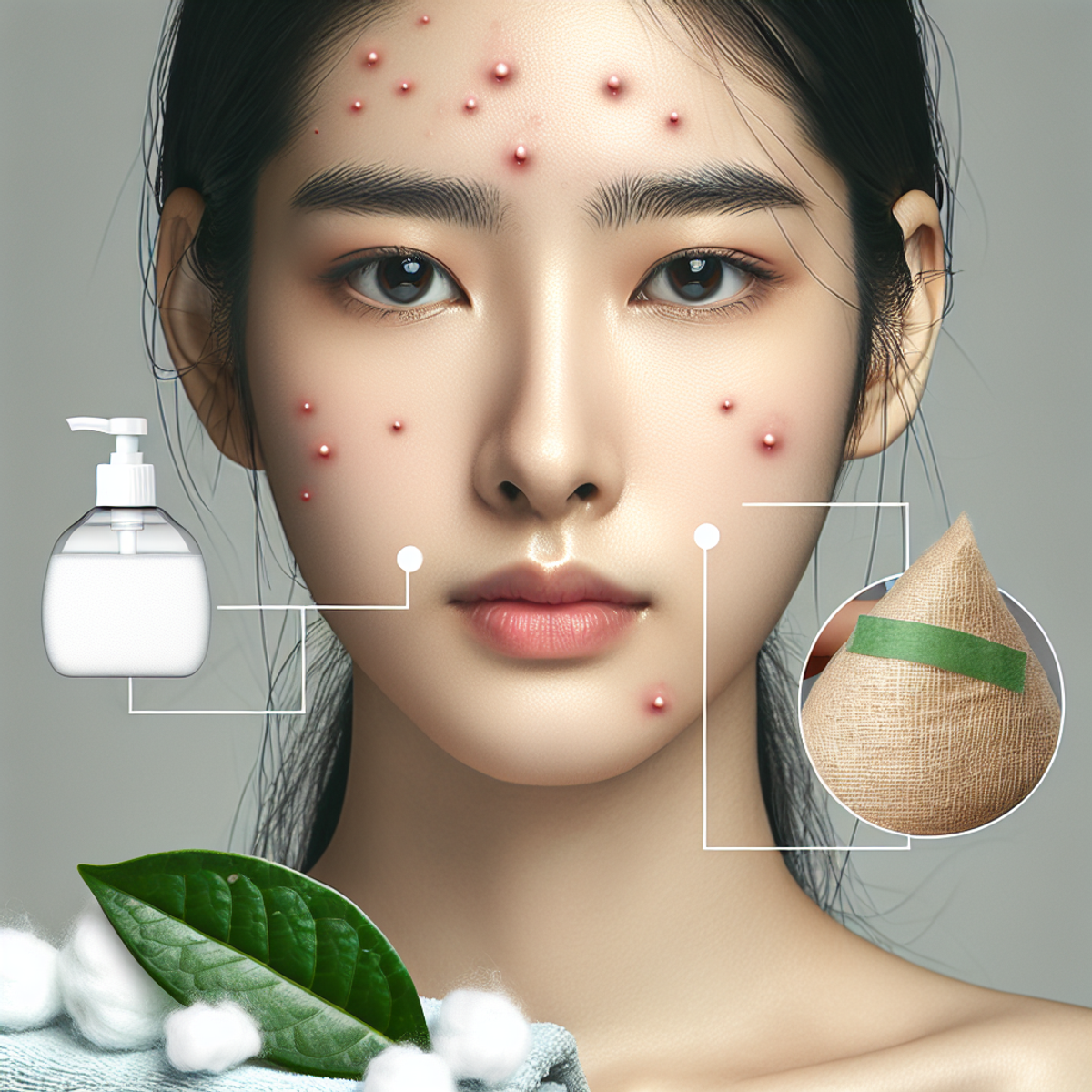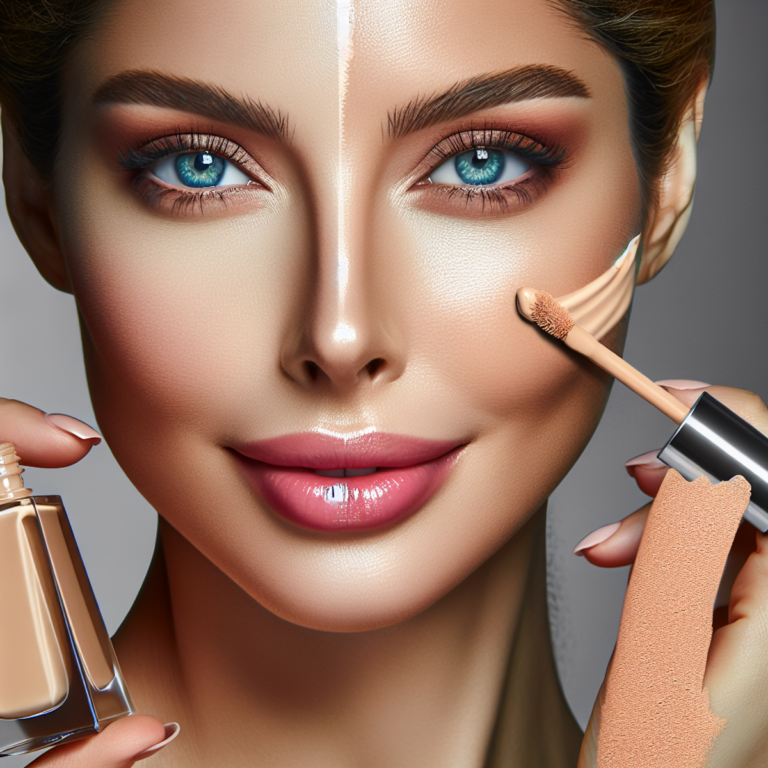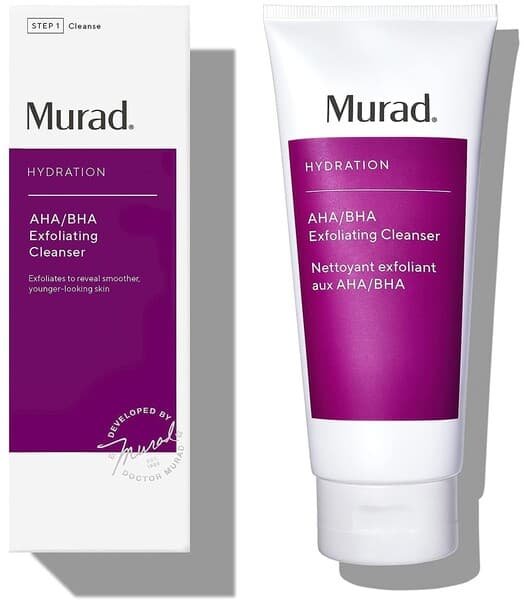How to Get Rid of Hairline Acne: Treatments and Causes, According to Dermatologists

Introduction
Hairline acne is a common skin condition that affects many people. It refers to acne breakouts that occur along the hairline, and it can be caused by a variety of factors. In this article, we will explore the causes of hairline acne and discuss effective treatments recommended by dermatologists to help you get rid of it.
Note: While the information provided here can be helpful, it’s always best to consult with a professional for personalized advice. Every individual’s skin is unique, and what works for one person may not work for another.
According to dermatologists, hairline acne is more prevalent than you might think. In fact, studies have shown that up to 45% of adults experience some form of acne along their hairline. This statistic highlights the significance of this issue and emphasizes the need for effective treatments.
In the following sections, we will delve deeper into understanding hairline acne, explore prevention strategies, discuss effective treatments, and provide tips on maintaining a skincare routine to prevent recurrence. Our goal is to give you the knowledge and tools you need to manage and eliminate hairline acne effectively.
Let’s get started on your journey to clear skin!
Understanding Hairline Acne
Hairline acne, also known as pomade acne, is a specific type of acne that occurs along the hairline. It differs from acne on other parts of the face due to its unique causes and aggravating factors.
How It Differs from Acne on Other Parts of the Face
Unlike acne on other facial areas, hairline acne is particularly influenced by external factors such as hair care products, sweat, and environmental elements. The location of the acne makes it more challenging to manage and treat effectively.
Primary Causes of Hairline Acne
The primary causes of hairline acne can be attributed to various factors, including:
- Clogged Pores Due to Hair Products: The use of certain hair care products such as pomades, gels, or oils can contribute to pore blockage along the hairline. These products often contain ingredients that may be comedogenic, leading to the accumulation of debris and sebum around the hair follicles.
- Excessive Oil Production: The natural production of oil (sebum) by the skin can also contribute to clogged pores along the hairline, making it more prone to acne breakouts.
Role of Sweat, Dead Skin Cells, and Environmental Factors
In addition to clogged pores and excessive oil production, sweat, dead skin cells, and environmental elements play a significant role in aggravating hairline acne. Sweat and environmental pollutants can mix with oils and hair products, creating an ideal environment for bacterial growth and inflammation.
To better understand how these factors interact with each other in causing hairline acne, this article provides a comprehensive explanation on the subject matter.
Understanding the distinct nature of hairline acne and its primary causes is crucial in developing effective prevention strategies and treatment plans. By addressing these specific factors, individuals can take proactive steps to manage and prevent hairline acne effectively.
Prevention Strategies for Hairline Acne
Preventing Hairline Acne by Choosing the Right Hair Care Products
- Importance of Avoiding Oil-based or Greasy Hair Products: These products can contribute to pore clogging along the hairline, leading to acne breakouts. Opt for non-comedogenic hair care products that are gentle on the skin around the hairline.
- Tips for Selecting Hair Care Products: Look for labels that specifically mention being non-comedogenic and suitable for acne-prone skin. Ingredients like tea tree oil, aloe vera, and salicylic acid can be beneficial in preventing hairline acne.
The Significance of Regular Hair Washing in Preventing Product Buildup and Breakouts Along the Hairline
- Frequency of Hair Washing: Understanding how often you should wash your hair is crucial in maintaining scalp health and preventing residue accumulation. This may vary depending on your hair type and lifestyle factors.
- Proper Technique for Cleansing: Ensure that you cleanse both your hair and scalp effectively to remove potential irritants and debris from the hairline area. Pay attention to massaging the scalp gently to dislodge any buildup.
Avoiding Friction and Occlusion: Protecting Your Hairline from Irritation and Acne Formation
- Role of Tight Accessories: Headbands, hats, or helmets can cause frictional acne along the hairline due to prolonged pressure and irritation. Opt for accessories that fit comfortably without exerting excessive pressure on the skin.
- Tips for Minimizing Friction: Consider alternating hairstyles or adjusting the fit of headwear to reduce friction and occlusion while ensuring your comfort and style.
By implementing these prevention strategies, you can effectively minimize the risk of developing hairline acne. However, it’s worth noting that certain skin conditions, like folliculitis, can also cause similar symptoms along the hairline. Therefore, if you’re experiencing persistent issues, it’s advisable to consult a dermatologist who can provide proper diagnosis and treatment.
Effective Treatments for Clearing Hairline Acne
When it comes to combating hairline acne, using the right treatments is crucial for effectively clearing and preventing breakouts in this area. Let’s explore some effective treatment options that dermatologists often recommend for addressing hairline acne:
1. Using Non-comedogenic Skincare Products
- Explanation of non-comedogenic: Non-comedogenic products are formulated to not clog pores, making them ideal for acne-prone areas like the hairline. When selecting skincare products, look for labels that indicate “non-comedogenic” to help prevent pore clogging and breakouts.
- Recommended ingredients: Some non-comedogenic ingredients that can be beneficial for treating hairline acne include hyaluronic acid, glycolic acid, and niacinamide. These ingredients are known for their ability to hydrate the skin without causing congestion or exacerbating acne.
2. Over-the-counter Topical Acne Products with Salicylic Acid or Benzoyl Peroxide
- Salicylic acid: This beta-hydroxy acid (BHA) is effective in treating acne by exfoliating the skin and unclogging pores. It also has anti-inflammatory properties, helping to reduce redness and swelling associated with acne breakouts along the hairline.
- Benzoyl peroxide: Known for its antibacterial properties, benzoyl peroxide can target acne-causing bacteria while reducing excess oil production. It’s often used to treat mild to moderate cases of hairline acne.
3. Incorporating Clarifying Shampoos
- How they work: Clarifying shampoos are specially formulated to deep-clean the scalp and hair, removing product buildup, excess oil, and impurities that can contribute to hairline acne. These shampoos typically contain surfactants or cleansing agents that effectively purify the scalp without stripping it of essential moisture.
- Incorporating clarifying shampoos: If you regularly use styling products or notice residue buildup along your hairline, incorporating a clarifying shampoo into your hair care routine can help maintain a healthier scalp environment and reduce the risk of acne formation.
By integrating these treatment options into your skincare and hair care routines, you can take proactive steps to combat hairline acne and promote clearer, healthier skin along the hairline. Remember that consistency is key when using these treatments, and it’s important to monitor how your skin responds to each product or ingredient.
Keep in mind that every individual’s skin is unique, so what works well for one person may not yield the same results for another. If you have persistent or severe hairline acne concerns, consulting a dermatologist can provide personalized guidance and tailored treatment recommendations based on your specific skin type and needs.
Maintaining a Skincare Routine to Prevent Hairline Acne Recurrence
To effectively prevent hairline acne and minimize its recurrence, it is important to address the underlying causes and establish a consistent skincare routine for overall hairline health. Here are some key points to consider:
The Importance of Addressing Underlying Causes for Long-term Management of Hairline Acne
Hairline acne can be triggered by various underlying factors, such as hormonal imbalances or stress, which can increase oil production and contribute to breakouts. It is crucial to identify and address these root causes to achieve long-term management of hairline acne. Consult with a dermatologist who can help determine the underlying cause of your breakouts and recommend appropriate treatment approaches.
Common Underlying Factors and Appropriate Treatment Approaches
- Hormonal Imbalances: Fluctuations in hormone levels can contribute to the development of hairline acne. In such cases, hormonal therapy or birth control pills may be prescribed by a dermatologist to regulate hormone levels and reduce acne breakouts.
- Stress: Chronic stress can trigger hormonal changes and increase oil production, leading to hairline acne. Managing stress through practices like mindfulness, exercise, and relaxation techniques can help improve overall skin health.
Establishing an Effective and Consistent Skincare Routine for Overall Hairline Health
A comprehensive skincare routine focused on the hairline can play a significant role in preventing hairline acne. Consider the following steps:
- Cleanse Gently: Use a gentle cleanser specifically formulated for acne-prone skin along the hairline area. Avoid scrubbing vigorously, as it can irritate the skin and worsen acne. Instead, cleanse with gentle circular motions using your fingertips.
- Exfoliate Regularly: Exfoliation helps remove dead skin cells and unclog pores along the hairline. Choose a mild exfoliating product that contains salicylic acid or glycolic acid, which can effectively prevent pore blockage and reduce acne breakouts. However, be cautious not to over-exfoliate, as it can lead to skin irritation.
- Moisturize: It is crucial to keep the skin hydrated, even if you have acne-prone hairline. Look for non-comedogenic moisturizers that won’t clog pores. These moisturizers are specially formulated to provide hydration without aggravating acne.
- Protect from the Sun: UV rays can worsen acne and cause post-inflammatory hyperpigmentation. Apply a broad-spectrum sunscreen with at least SPF 30 along the hairline area every day, even during cloudy or winter days.
- Avoid Touching: Resist the urge to touch or pick at your hairline acne, as it can introduce bacteria and lead to infection or scarring. Additionally, avoid resting your hands or objects against your forehead to prevent further irritation.
By following these steps consistently, you can maintain a healthy hairline and reduce the likelihood of hairline acne recurrence.
Remember, everyone’s skin is unique, and what works for one person may not work for another. If you experience persistent or severe hairline acne despite following a skincare routine, it is recommended to consult with a dermatologist for personalized advice and further treatment options
When to Seek Professional Advice
Hairline acne can often be managed with at-home treatments and preventive measures. However, there may be instances where professional advice from a dermatologist is necessary for severe or persistent hairline acne issues. It’s important to recognize when it’s time to seek professional help to ensure effective treatment and avoid potential complications. Here are some indicators that you should consult a dermatologist:
- Severity of the acne: If your hairline acne is severe, characterized by deep cysts, nodules, or widespread inflammation, it’s best to consult a dermatologist. They can assess the severity of your condition and recommend appropriate treatment options.
- Lack of improvement: If you have been following a consistent skincare routine and using over-the-counter treatments for an extended period but haven’t seen any improvement in your hairline acne, it may be time to seek professional advice. A dermatologist can evaluate your condition, identify any underlying causes, and suggest alternative treatments.
- Recurrent or persistent acne: If your hairline acne keeps coming back despite your best efforts to prevent it, it’s advisable to consult a dermatologist. They can investigate potential triggers or contributing factors that may be causing the recurrence and provide targeted solutions.
- Emotional distress: Hairline acne can have a significant impact on a person’s self-esteem and mental well-being. If your hairline acne is causing emotional distress or affecting your quality of life, don’t hesitate to reach out to a dermatologist who can offer guidance and support.
Remember, dermatologists are highly trained professionals who specialize in treating various skin conditions, including hairline acne. They have access to advanced treatment options and can tailor their recommendations based on your specific needs. Seeking professional advice ensures that you receive personalized care and increases the likelihood of effectively managing your hairline acne.
Conclusion
Dealing with hairline acne can be challenging, but with the right approach, you can effectively manage and treat this condition. By understanding the causes and implementing preventive strategies, you can take proactive steps to minimize the occurrence of hairline acne.
It’s important to remember that each individual’s skin is unique, so what works for one person may not work for another. Therefore, it’s crucial to consult a dermatologist for personalized advice and treatment recommendations tailored to your specific needs.
I encourage you to take action and explore the recommended treatments discussed in this article. Whether it’s adjusting your hair care routine, incorporating non-comedogenic skincare products, or seeking over-the-counter acne treatments, there are various options to address hairline acne.
Remember that consistency is key when it comes to skincare and acne management. Establishing a regular skincare routine and being mindful of product choices can significantly contribute to maintaining a healthy hairline.
Ultimately, prioritizing your skin health and seeking professional guidance when necessary will empower you to effectively manage hairline acne and enjoy clearer, healthier skin.
Take the first step towards healthier skin by implementing these strategies while remaining open to seeking professional advice as needed. Your journey to clearer skin starts now.










